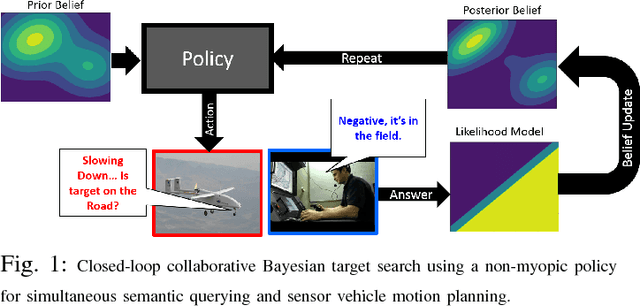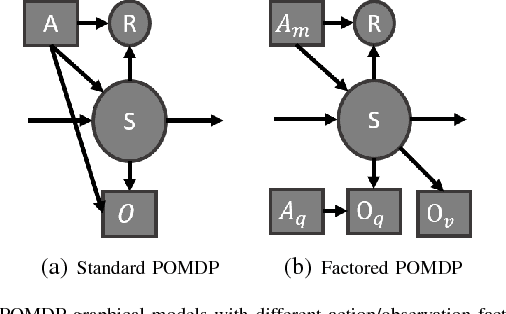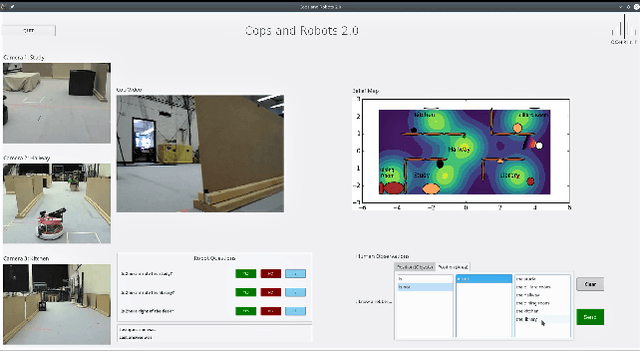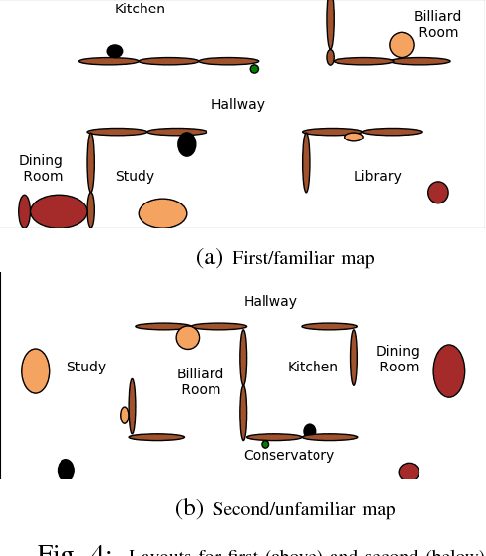Jeremy Muesing
Closed-loop Bayesian Semantic Data Fusion for Collaborative Human-Autonomy Target Search
Jun 03, 2018



Abstract:In search applications, autonomous unmanned vehicles must be able to efficiently reacquire and localize mobile targets that can remain out of view for long periods of time in large spaces. As such, all available information sources must be actively leveraged -- including imprecise but readily available semantic observations provided by humans. To achieve this, this work develops and validates a novel collaborative human-machine sensing solution for dynamic target search. Our approach uses continuous partially observable Markov decision process (CPOMDP) planning to generate vehicle trajectories that optimally exploit imperfect detection data from onboard sensors, as well as semantic natural language observations that can be specifically requested from human sensors. The key innovation is a scalable hierarchical Gaussian mixture model formulation for efficiently solving CPOMDPs with semantic observations in continuous dynamic state spaces. The approach is demonstrated and validated with a real human-robot team engaged in dynamic indoor target search and capture scenarios on a custom testbed.
 Add to Chrome
Add to Chrome Add to Firefox
Add to Firefox Add to Edge
Add to Edge